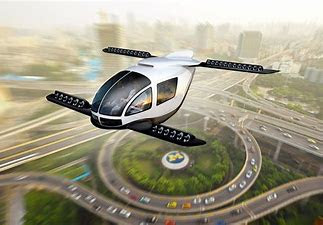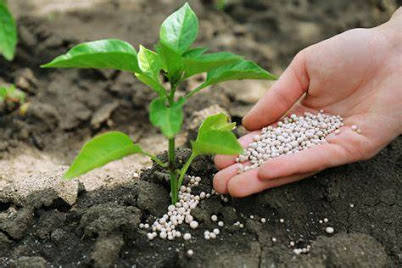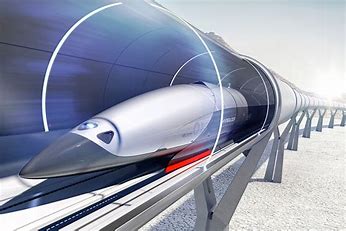1. Hyperloop
The Hyperloop is a proposed mode of passenger and freight transportation, first used to describe an open-source vactrain design released by a joint team from Tesla and SpaceX. Hyperloop is described as a sealed tube or system of tubes with low air pressure through which a pod may travel substantially free of air resistance or friction. The Hyperloop could potentially convey people or objects at airline or hypersonic speeds while being energy efficient compared with existing high-speed rail systems. This, if implemented, may reduce travel times compared to train and airplane travel over distances of under approximately 1,500 kilometers (930 miles).
Hyperloop was discovered by famous entrepreneur Ellon musk in 2012, The Ellon Musk says that the hyperloop transportation will change the world with a new transportation system. Now to travel from one place to another place we are traveling through the bus, trains, cars, airplanes, etc but these transportations take more time to travel.
2. 3D Printers
3D printing, also called additive manufacturing or additive layer manufacturing, is the process of building a three-dimensional object from scratch, one layer at a time. It generally starts with a digital, 3D model of the component to be manufactured. This model is digitally “cut” into many extremely thin slices by the software. The thickness of the slices depends on the shape of the product and type of material to be used.
Raw material is then loaded into the machine, generally in the form of powder or pellets. Plastic is the most commonly used substance, but certain types of metal (aluminum, titanium, stainless steel, and others) may also be used. The raw material is heated to its melting point and placed onto the work surface by the machine, one layer at a time, until the product has been fully printed.
3. Self Driving Cars
Actually, a self-driving car technology is a combination of many modern technologies in a normal car. It uses the camera, GPS system, computer vision, laser light, radar, odometry and many more sensors to drive the car smoothly over the roads. This car has advanced control systems which are used to analyze data from different sensors and cameras to plan a path to the desired location. This technology is safe, flexible, and efficient.
A self-driving car’s “sight” or perception is achieved via several mechanisms. Cameras are installed on the roof and in other places around the car for 360º vision (Figure 2). While cameras are good for identifying shapes and colors in the environment, they are not helpful in finding the distance to an object. Fortunately, self-driving cars also have high-tech sensors, called LIDARs that are much better at determining the location of people and objects around the car. LIDAR (or “Light Detection and Ranging”) is a device with a constantly rotating laser beam. It sends invisible light pulses all around it. By measuring the travel time and location of the reflected laser light, it can discriminate the shape and location of surrounding objects. In addition to cameras and LIDARs, self-driving cars often have conventional radars. Although radars can only see very fuzzily, they are great at detecting moving objects and are much cheaper than the other devices.
4. 5G Technology
The fifth-generation global wireless technology is unlike 4G, its predecessor technology. 5G cellular technology can deliver data rates orders of magnitude higher than current 4G networks, but besides high speeds, it promises low latency and the ability to connect many devices without being bogged down. That’s why 5G will not only strengthen and greatly improve existing use cases, but it will also power brand-new experiences that will become a reality for the first time, like augmented reality.
The fifth-generation cellular technology can deliver data rates of 10 to 100 times faster than current 4G networks, which will greatly improve user experience and the performance of use cases that are already in existence, Blackard said.
In the future, 5G will provide higher qualities of service, lower latency, and higher bandwidth, which will help improve user experiences both in the consumer and business space, from cloud gaming, to telehealth use cases.
5. Humanoid Robots
The future of humanoid robots is expected to serve as companions and assistants to humans in their daily lives and also as the ultimate helpers in the times of natural disasters. Here are a few ways the robots will help to transform the future in a more convenient environment. These robots could be used in security systems. Apart from this, robots can also be used in homes. Although some of them are already being used, like the vacuum cleaners, the washing machines, but the humanoid robots could serve as companions to the humans, and as the Japanese scientists say, robots will soon be a part of the families just like pets.
Many countries like the United States, United Kingdom, Canada, Japan, etc. will be leading this robotic adoption. The four main industries that will be seen taking charge of the advancements would be computer and electronic products, the electrical equipment and appliances industry, transportation equipment and the machinery. The service industry would be greatly affected by this change.
6. Flying Cars
Flying cars are potentially one of the most lucrative automotive and aerial technologies that could reshape the future of advanced automotive and aerospace technologies. The main objective of technological companies such as Google, but also of OEMs is the achievement of a fully functional flying car by the end of 2022.
Future flying car passengers will be able to get a glimpse of what travel will be like by trying a VR simulator that allows them to pilot the Pal-V Liberty concept, which looks like a hybrid of a sports car and a helicopter.
7. Floating Farms
The Floating Farm is about designing a highly sustainable farm, based on a technological concept that is new to the agro-food industry. It includes a combination of factors such as the need for animal fodder (biomass), land usage, water needs and the processing of animal waste such as urine and manure.
There will be more than 2 billion more people in the world by the year 2050. The UN predicts that it will create a demand for 70 percent more food. There will be more than 80% of people living in big cities. So the supply of food will get from floating farms. A single Smart floating farm measuring 350* 200m can produce an estimate of 8.1 tons of vegetables. Floating farms will reduce the food risk associated problems.
















